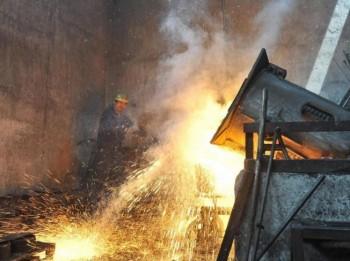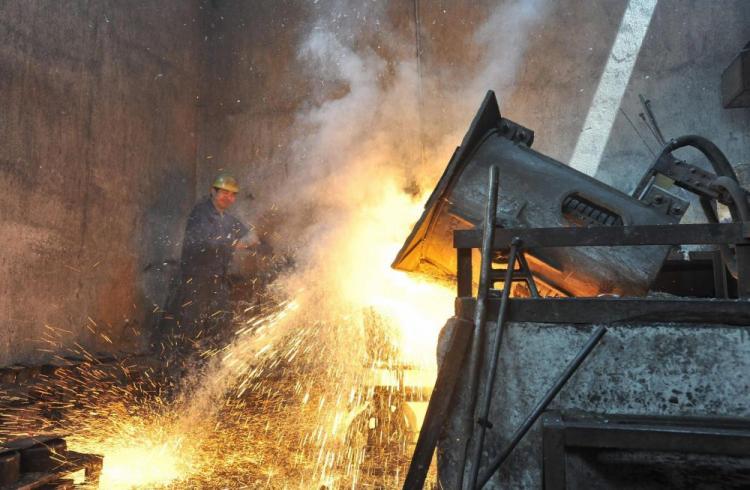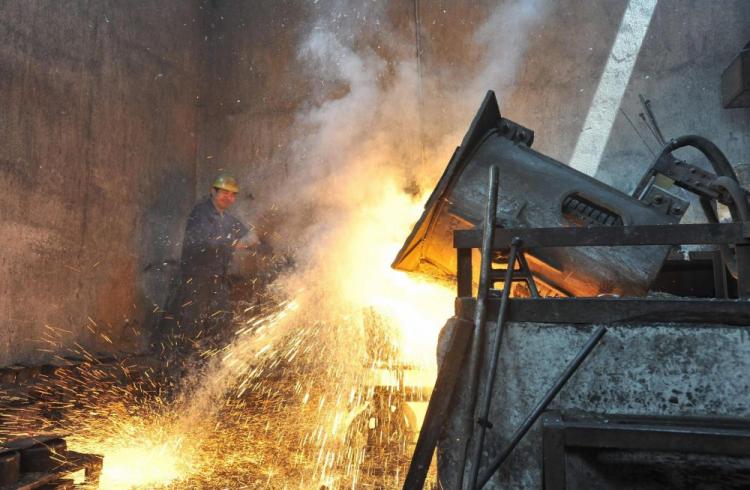For the many who were wondering whether China could reach its ambitious 8 percent target for economic growth in 2009, the Chinese regime’s National Bureau of Statistics released figures recently that relieved the suspense.
With an 8.9 percent year on year growth in the third quarter and 7.7 percent year to date growth, the figures show China’s economy is accelerating towards the end of the year, making the 8 percent target likely.
On the surface, growth in China’s GDP is a pleasant surprise in the midst of current global markets.
What concerns market analysts, however, is the possibility that the largely investment driven growth will be unsustainable.
China’s GDP growth is dominated by government investment, which in many areas is worryingly high. This includes sectors such as infrastructure, where 52 percent of investment is from the state. Growth in these areas has a low impact on other economic areas, and is a hotbed for corruption under the current political system.
Growth lead by the market is also very weak, such as the growth from export, foreign investment and private investment. These, all indicators of market prosperity, are either in decline or have zero growth. It indicates that up to date the regime’s stimulus package has not received a positive response from the market.
Considering that the government stimulus was 4 trillion yuan (approximately $585 billion) this year, and that liberal bank lending this year was 8.7 trillion yuan ($1.27 trillion), the motors behind China’s growth are brought into question.
“The Chinese economy has taken off, but it is flying on one engine,” said Brian Jackson, a senior strategist at Royal Bank of Canada in Hong Kong, as reported by AFP.
“China’s recovery has been impressive, but it has been heavily reliant on government-directed investment, funded by aggressive bank lending. To keep the economy moving at a fast pace, we need to see a more broad-based recovery.”
Other economists say that this “broad-based” recovery is already occurring.
“Besides the third quarter GDP release, the evidence from other key economic indicators is that China’s economy is back on a strong, sustainable growth path that looks set to extend through next year into 2011 and beyond,” said U.K.-based Geoff Lewis, head of investment services at JP Morgan Asset Management, in the Telegraph.
What those with an optimistic view of the Chinese economy see are recent increases in imports, exports, as well as profit increases in Chinese businesses.
Many of these increases though, are also directly related to government spending and the lending practices of banks.
Reading economic data from the Chinese regime is a lot like watching a mixed up street performance. A layman looks for excitement, an expert for know-how.
It could be said that the Chinese regime never intended for the stimulus to rebalance the economy, only keep it going long enough for world markets to pick up, so it could then enact reform.
This reform would have to fix systematic problems. Wanton meddling in the marketplace by the regime, as well as manipulation of economic data, hinder any kind of a fair environment needed for balanced growth.
With an 8.9 percent year on year growth in the third quarter and 7.7 percent year to date growth, the figures show China’s economy is accelerating towards the end of the year, making the 8 percent target likely.
On the surface, growth in China’s GDP is a pleasant surprise in the midst of current global markets.
What concerns market analysts, however, is the possibility that the largely investment driven growth will be unsustainable.
China’s GDP growth is dominated by government investment, which in many areas is worryingly high. This includes sectors such as infrastructure, where 52 percent of investment is from the state. Growth in these areas has a low impact on other economic areas, and is a hotbed for corruption under the current political system.
Growth lead by the market is also very weak, such as the growth from export, foreign investment and private investment. These, all indicators of market prosperity, are either in decline or have zero growth. It indicates that up to date the regime’s stimulus package has not received a positive response from the market.
Considering that the government stimulus was 4 trillion yuan (approximately $585 billion) this year, and that liberal bank lending this year was 8.7 trillion yuan ($1.27 trillion), the motors behind China’s growth are brought into question.
“The Chinese economy has taken off, but it is flying on one engine,” said Brian Jackson, a senior strategist at Royal Bank of Canada in Hong Kong, as reported by AFP.
“China’s recovery has been impressive, but it has been heavily reliant on government-directed investment, funded by aggressive bank lending. To keep the economy moving at a fast pace, we need to see a more broad-based recovery.”
Other economists say that this “broad-based” recovery is already occurring.
“Besides the third quarter GDP release, the evidence from other key economic indicators is that China’s economy is back on a strong, sustainable growth path that looks set to extend through next year into 2011 and beyond,” said U.K.-based Geoff Lewis, head of investment services at JP Morgan Asset Management, in the Telegraph.
What those with an optimistic view of the Chinese economy see are recent increases in imports, exports, as well as profit increases in Chinese businesses.
Many of these increases though, are also directly related to government spending and the lending practices of banks.
Reading economic data from the Chinese regime is a lot like watching a mixed up street performance. A layman looks for excitement, an expert for know-how.
It could be said that the Chinese regime never intended for the stimulus to rebalance the economy, only keep it going long enough for world markets to pick up, so it could then enact reform.
This reform would have to fix systematic problems. Wanton meddling in the marketplace by the regime, as well as manipulation of economic data, hinder any kind of a fair environment needed for balanced growth.






